
Vlad Yudkin
January 25, 2024
The Power of Display Advertising: Illuminating the Digital Landscape
In today’s ever-evolving digital landscape, businesses are constantly seeking innovative ways to capture the attention of their target audience. Among the myriad advertising options available, display ads have emerged as a powerful tool, illuminating the online sphere and providing unique advantages over other forms of advertising.
What is Display Advertising?
Display ads, also known as banner ads, are a form of online advertising that appears on websites, apps, social media platforms, and other digital spaces. These ads are typically visual advertisements in the form of images, graphics, animations, or videos, displayed on a webpage or within an app to promote a product, service, or brand.
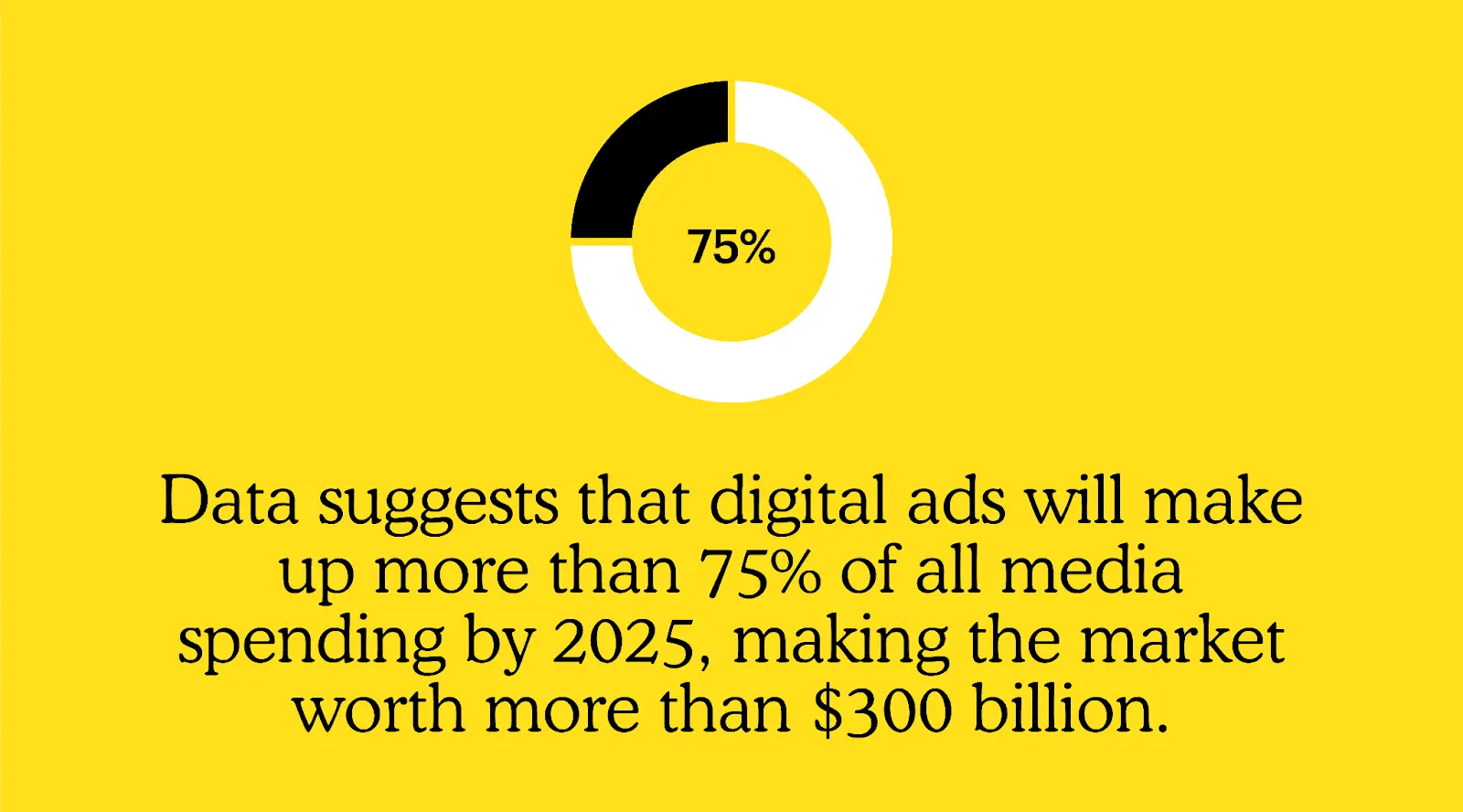
How Are Display Ads Different
- Visual Appeal and Creativity. Display ads leverage the visual medium, allowing businesses to create visually appealing and highly creative advertisements. Unlike text-based ads, display ads can incorporate vibrant images, engaging videos, and interactive elements. This visual appeal captures the audience's attention swiftly, making a memorable impression and enhancing brand recall.
- Targeted Precision. One of the key advantages of display ads lies in their ability to target specific demographics and interests. Advanced targeting options enable businesses to display their ads to a highly relevant audience based on factors such as age, location, interests, and online behavior. This precision ensures that the ad reaches the right people, maximizing the chances of conversion.
- Brand Visibility and Recognition. Display ads contribute significantly to brand visibility and recognition. Through strategic placement on websites, social media platforms, and mobile apps, these ads increase brand exposure, making the brand more recognizable to the audience. Consistent visibility fosters trust and familiarity, essential elements for building a strong brand identity.
- Retargeting Capabilities. Display ads excel in retargeting campaigns, where they target users who have previously interacted with a brand but did not make a purchase. By reminding these potential customers about products or services they viewed, display ads significantly increase the likelihood of conversion. This personalized approach enhances user experience and drives sales.
- Measurable Results and Analytics. Digital display advertising provides businesses with robust analytics and performance metrics. Advertisers can track metrics such as impressions, click-through rates (CTR), conversion rates, and return on investment (ROI). Analyzing these metrics allows businesses to assess the effectiveness of their campaigns, make data-driven decisions, and optimize their strategies for better results.
- Cost-Effectiveness and Flexibility. Compared to traditional forms of advertising, display ads often offer a more cost-effective solution. Advertisers can set budgets and bidding strategies, ensuring they get the most out of their marketing budget. Additionally, the flexibility of display ads allows businesses to experiment with various formats, sizes, and designs, tailoring their campaigns to suit different platforms and audiences.
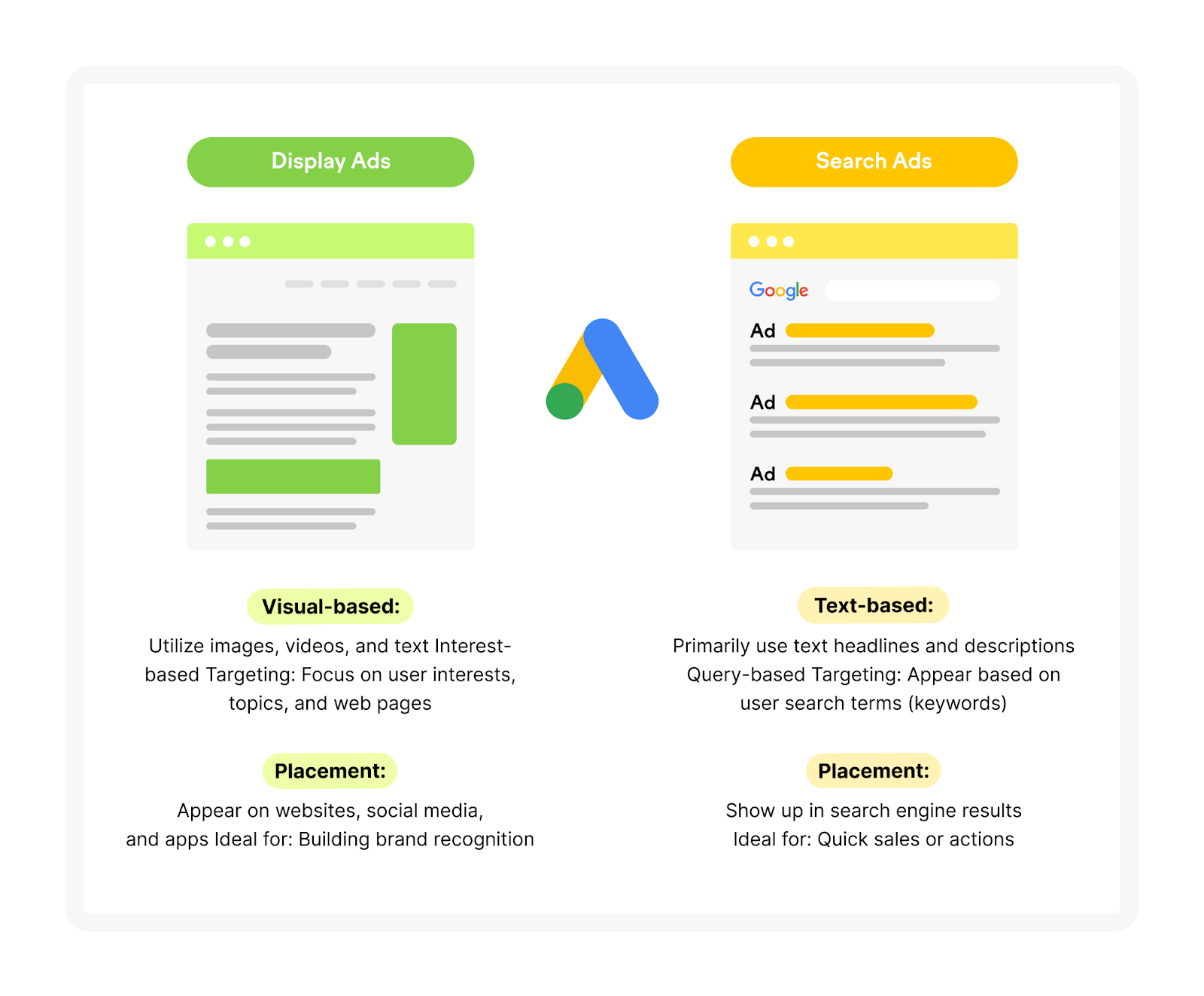
Types of Display Ads
Display ads come in various formats and sizes, designed to capture the attention of the audience and convey a message effectively. Here are some common types of display ads:
- Banner Ads. Banner ads are rectangular or square ads displayed at the top, bottom, or sides of a website. They come in standard sizes like 728x90 (leaderboard), 300x250 (medium rectangle), and 160x600 (skyscraper). Banner ads often contain images, text, and sometimes interactive elements.
- Rich Media Ads. Rich media ads are interactive and engaging, incorporating elements like videos, audio, animations, and interactive features. They can expand, float, or peel down, providing a dynamic user experience beyond simple static images.

Video Ads. Video ads are short video clips that play before, during, or after online video content. They can also appear as in-banner videos, where the video is embedded within a standard banner ad. Video ads are highly effective for conveying messages visually and capturing the audience's attention.
- Interstitial Ads. Interstitial ads are full-screen ads that appear between content pages during natural breaks, such as when transitioning between levels in a mobile game or pages on a website. They are often visually appealing and offer a captivating user experience.
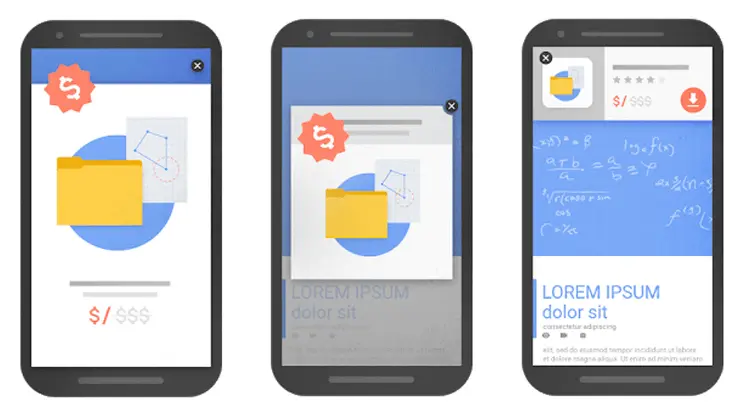 Image source
Image source
- Expandable Ads. Expandable ads start as a smaller size (like a banner) and expand to a larger size (such as a full banner or even interstitial) when the user interacts with them. They allow advertisers to deliver more information without taking up excessive space on the initial page.
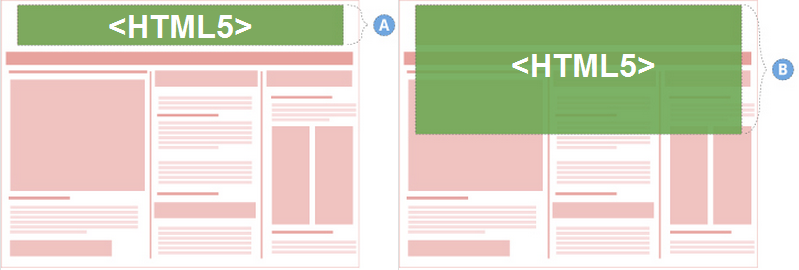 Image source
Image source
- Carousel Ads. Carousel ads display a series of images or videos that users can scroll horizontally, showcasing multiple products or features within a single ad unit. Users can interact with the carousel to view different content, making it an engaging format for storytelling and product showcases.
- Dynamic Ads. Dynamic ads automatically personalize content based on the user's behavior, preferences, or demographics. For example, an e-commerce dynamic ad might show products similar to ones the user has viewed or purchased before, creating a tailored and relevant user experience.
- Animated Ads. Animated display ads use movement and animation to capture attention. They can be in GIF or HTML5 format and are designed to convey a message effectively through visually engaging animations.
- Lightbox Ads. Lightbox ads are expandable rich media ads that only expand when a user interacts with them, ensuring that advertisers only pay for engaged users. When clicked or hovered over, they expand into a larger, interactive ad with videos, images, and other interactive elements.
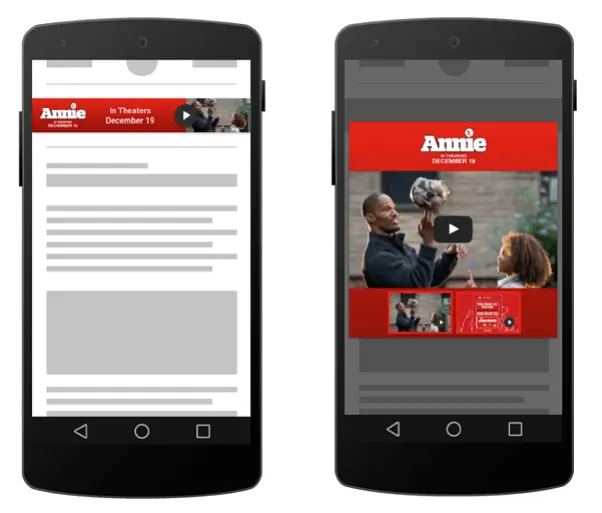 Image source
Image source
- Pop-up Ads. These ads "pop up" over the content of the website a user is viewing, often interrupting the user's browsing experience. Pop-up ads can contain various content, including images, videos, forms, or promotional messages.

Choosing the right type of display ad depends on the advertising goals, target audience, and the platform where the ads will be displayed. Each format offers unique advantages and can be tailored to specific marketing objectives.
How to Create a Display Ad
Creating effective display ads involves a combination of creativity, design skills, and a good understanding of your target audience. Here's a step-by-step guide on how display ads are typically made:
Define Your Goals
Determine the purpose of your display ad. Are you trying to increase brand awareness, drive website traffic, or boost sales? Clear goals will guide your design and messaging.
Identify Your Target Audience
Understand your audience's preferences, interests, and behaviors. Tailor your ad to appeal to the specific demographic you want to target.
Choose the Right Ad Format
Select the appropriate ad format based on the platform and your goals. Options include banners, rich media, video, interstitial, native, etc.
Design the Ad
- Create Compelling Visuals: Use high-quality images, graphics, and animations that align with your brand. Ensure the visuals are attention-grabbing and relevant to your message.
- Craft Engaging Copy: Write concise and compelling ad copy. Use persuasive language, a clear value proposition, and a strong call-to-action (CTA) to encourage user interaction.
- Consider Branding: Incorporate your brand logo, colors, and fonts to maintain consistency with your brand identity.
Optimize for Different Sizes
Design your ads in various sizes to fit different ad placements across websites and devices. Common sizes include 728x90, 300x250, 160x600, and 320x50 pixels. Ensure your ad is responsive and visually appealing on both desktop and mobile devices.
Add Interactivity (If Applicable)
For rich media ads, incorporate interactive elements like videos, animations, quizzes, or games to enhance user engagement. Interactive ads can significantly increase user interaction and improve ad performance.
Adhere to Platform Guidelines
Different advertising platforms and networks have specific guidelines and requirements. Adhere to these guidelines to ensure your ad is accepted and displayed correctly.
Create a Landing Page (If Necessary)
If your ad directs users to a specific page on your website, create a dedicated landing page optimized for conversions. Ensure the landing page is consistent with the ad's message and provides a seamless user experience.
Test and Iterate
A/B test different ad variations to identify what works best. Test different visuals, ad copy, CTAs, and even colors to determine the most effective combination. Use analytics to track the performance of your ads and make data-driven decisions for optimization.
Comply with Legal and Ethical Standards
Ensure your ads comply with legal regulations and ethical standards. Avoid using misleading or deceptive content, and be transparent about sponsored or promotional content.
Launch and Monitor
Once your ads are ready, launch them on the selected advertising platforms. Monitor their performance closely and make adjustments as needed to improve their effectiveness.
What is Display Advertising & Types of Display AdsConclusion
In the competitive digital landscape, where capturing and retaining audience attention is paramount, display ads shine brightly as a beacon of effective advertising. Their visual appeal, targeted precision, retargeting capabilities, measurability, and cost-effectiveness make them a preferred choice for businesses aiming to enhance their online presence and drive meaningful results. As technology continues to advance, display ads are poised to evolve further, offering even more innovative ways for businesses to connect with their audience, solidifying their position as a superior advertising medium in the digital age. Let us assist you in creating eye-catching display ads.
Sources:
Display Ads: What They Are, Types, & How They Work
What Are Display Ads? The Complete Guide
Display Ads
8 Types of Display Ads You Need to Know




